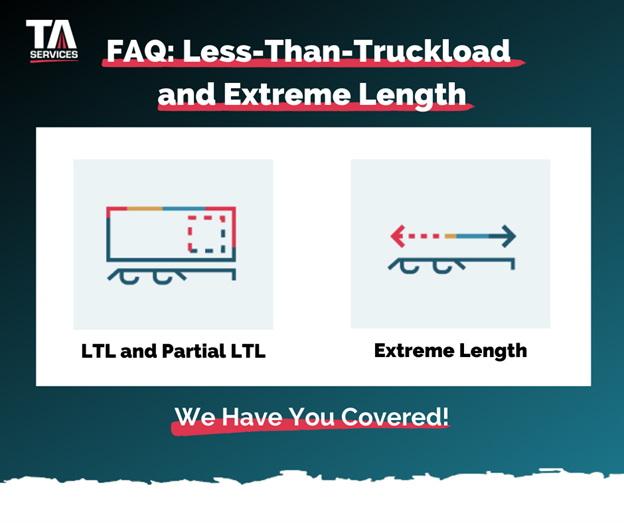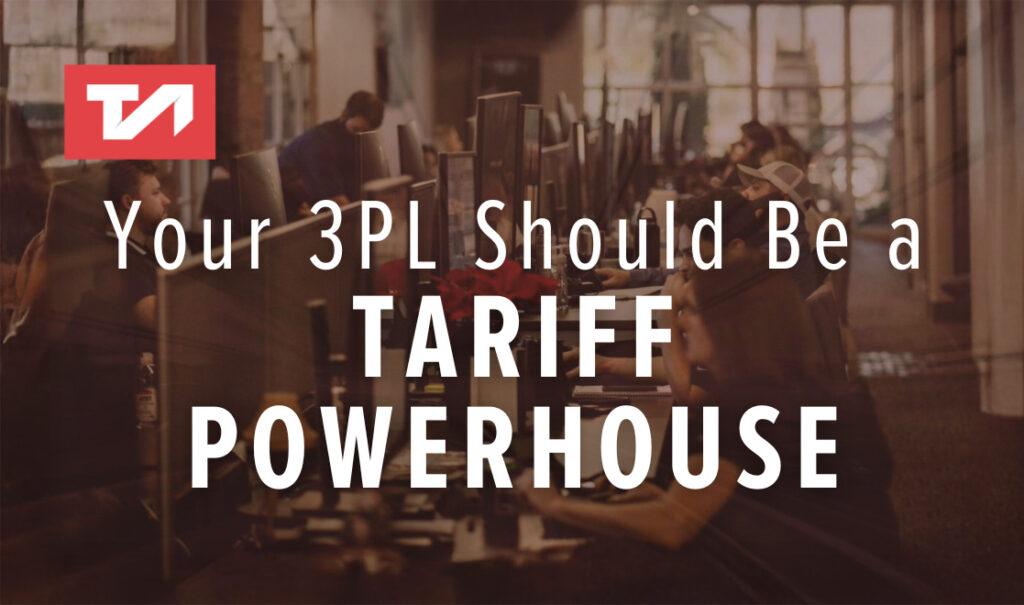Mar 3, 2022
Everything You Need to Know about LTL and Extreme Length

Welcome back to our series on specialty freight. In part one, you were introduced to the variety of shipping options available to you. Now, we’re answering some of the most common questions about each one—starting with less-than-truckload and extreme length.
An introduction to less-than-truckload and partial less-than-truckload
What is less-than-truckload (LTL)?
LTL is a method of shipping that combines small shipments from different parties on a single truck. Since not every shipment you have will be large enough to require a full truck’s worth of space, LTL offers an efficient and cost-effective solution.
What size shipments qualify for LTL or partial LTL?
Most commonly, the weight of an LTL shipment is between 150 and 15,000 pounds. LTL is often the best option when the shipment is less than six pallets, while partial LTL is for shipments more than six pallets but less than 12 pallets (or a full truckload).
What are the benefits of LTL?
LTL is a cost-effective solution since the costs are split between multiple shippers. Just think, if you hired an entire truck and trailer for a load that took up only half the trailer’s space, you’re still paying the full price. But if another shipper is also using space in that trailer to move their items, they take over a portion of the cost.
When should you use LTL?
While LTL is a great way to save on expenses for smaller shipments, it does mean the carrier must make stops along the way to pick up and drop off other shipments. LTL is best utilized when cost savings are a priority and delivery times are flexible.
Keep in mind next time your shipment may benefit from LTL…
● If your shipment is less than 12 pallets, LTL or partial LTL could be the right option.
● Think about your priorities. LTL works best if your delivery window is flexible and cost savings are important.
Understanding extreme length shipments
What is extreme length?
When you work with a carrier, they will typically set size limitations on your freight. That doesn’t always mean they aren’t able or willing to ship them, but you will incur an extreme length fee (also referred to as an overlength fee) if you go over that limit.
How do you know if your shipment qualifies as extreme length?
Every carrier can set its own parameters for extreme length, but the typical limits range between 8 and 12 feet.
How much are extreme length fees?
Accessorial fees also vary from carrier to carrier. Typically, the fees are based on the length and the quantity of the items. Meaning a shipment with three 12-foot items will have a higher overlength fee than a shipment with just one 9-foot item.
How common are extreme length fees?
The average shipment does not qualify for extreme length—hence the name “extreme.” But there are some industries that are more likely to incur extreme length fees, such as manufacturing. Items like lumber, pipes, and rods are often subject to these fees.
Keep in mind next time you’re shipping something longer than usual…
● Since length limits and fees vary by carrier, understand ahead of time what they are for the carriers in your roster.
● Choosing a 3PL with experience in extreme length will make navigating these limitations and fees more manageable.
● If your item is both long and wide, it may fall under the umbrella of heavy haul shipments. This comes with a whole new set of regulations that we’ll be discussing in part three of this series.
At TA Services, we have 35 years of experience helping shippers like you manage everything that goes into a strategic and efficient transportation program, including LTL and extreme length. If this was helpful, come back for the third installment of this five-part series, where we’ll be discussing temperature-controlled freight and heavy haul.
Get in touch with TA Services for a quote on your next freight shipment.



